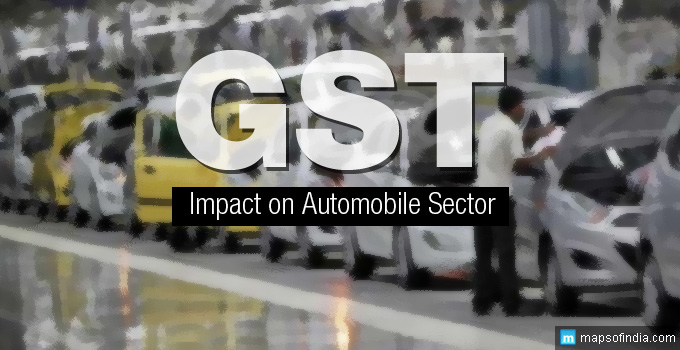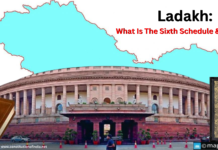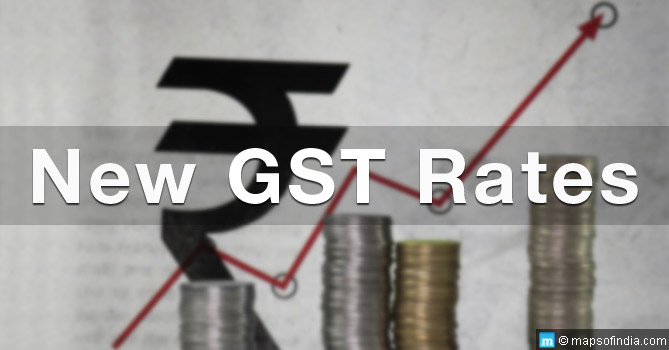The much-awaited Goods and Service Tax (GST) will get rolling from July 1, 2017. GST will impact various sectors and industries of the country, some in a positive way and some others in a negative way. One sector which has the possibility of a having a very positive impact is the automobile sector primarily because of the efficiency and the removal of cascading associated with GST. Let us discuss in details how GST will impact the various car segments in the country:
Small Cars
India is basically a small car market and it will continue to remain so. India’s largest car maker Maruti Suzuki’s chairman RC Bhargava said that small compact cars in the range of Rs 5-8 lakhs account for more than three-fourths of the car market. With GST, automobile manufacturers, especially price-sensitive segment carmakers, are slightly apprehensive with the changes that GST will bring. But, the rates that have been fixed for different car segments in the process of running GST have shown that the there will not be much difference in prices for small cars, come July 1. There might be a slight rise in price at the initial phase but at the same time more schemes and offers will be offered in smaller cars, thereby maintaining a sustainable demand. At present, the current effective tax is 29% on small cars (VAT plus excise plus cess). With GST, the rate will be 28% plus 1% cess for petrol cars (and 3% for diesel). This won’t be much of a change from the present tax rate.
Mid-Sized Cars and SUVs
GST will also provide a boost to the upcoming car segments like as mid-sized sedans and sports utility vehicles (SUVs), and the luxury segment cars. Both these segments of the automobile industry comprise just 25-30% of the market. At present, the difference between current value-added tax bracket and GST rate (plus cess) is almost 10% points. This will also make these premium cars accessible to more buyers. SUVs will bring about more fillip to the automobile industry. Compared to last year, in the first two months of the current fiscal year, there was an increase of SUV sales to 1.4 lakh units, that is, by 16%. Hyundai Motor India’s director, sales and marketing, Rakesh Srivastava said that with GST, the prices of mid-size sedans and SUVs are likely to go down.
Luxury Cars
Needless to say, the luxury car segment will be the biggest beneficiary of GST. There will be gains ranging from Rs 60,000 to as much as Rs 6 lakh. This can be anywhere between 4% and 9%, depending on the state. This segment of the car industry was not easily affordable due to high tax rates and was just 1% of the overall passenger vehicle market. With GST, there will be a downfall in the price of luxury cars due to the benefits of a lower tax regime. Infact, Mercedes has already reduced the price of its upper end models by as much as Rs 7 lakhs. Industry experts have also said that with increase in manufacturing of these cars, there will be more investment from the dealer network and also from the parent companies, which in turn will lead to the requirement of additional manpower, leading to an improvement in the job market too for manufacturers and dealers. With prices going down for big and luxury vehicles and customers’ income levels going up, buying bigger vehicles will be more affordable in the future.
Hybrid Cars
The government has already ordered for the removal of hybrid cars from the lower tax bracket. As a result, at present these cars are now unsustainable with GST rates on par with diesel and petrol cars. The 43% tax (28% GST plus 15%) on hybrids is too high as a result of which these cars will phase out from the market.
To sum up
Let us check the summary in the two tables given below:
THEN…
| Car Segments | VAT+Excise+NCCD+auto cess |
| Small cars (below 1200cc) | Roughly 28% |
| Mid-size cars (1200-1500cc) | 39% |
| Luxury cars (Over 1500cc) | 42% |
| SUVs (over 1500cc, over 170 mm ground clearance) | 45% |
And now…
| Car Segments | GST + cess |
| Small cars (below 1200cc) | 29% |
| Mid-size cars (1200-1500cc) | 31% (3% cess for diesel vehicles) |
| Luxury cars and SUVs (Over 1500cc) | 43% |
| Hybrid cars | 43% |
The GST with cess may look very high above 40% for SUVs and luxury cars. But in reality, it is much less than the present rate of effective tax around 50 to 55% (including road tax and other taxes). The overall impact of GST on the automobile sector is, thus, a positive one. We can expect more demand for mid-size sedans and SUVs. The only hitch that can arise is if the state governments impose additional duties to compensate for revenue loss. But if this happens, then the very motto of GST “one nation, one tax” won’t be fulfilled. Let’s just wait and watch…
Read More:
GST Rate Structure
Income Declaration Scheme 2016
Swachh Bharat Cess on Service Tax
What is Krishi Kalyan Cess?
Corporate Tax in India
Indo-US Tax Information Exchange Agreement
Can GST Bill really kill the ‘kachcha bill’ system?
New GST regime and its future impact on telecom industry in India
Equity Markets Move Up; Lok Sabha Passes GST Bill
Equity Volatile; GST Bill in Next Session
New tax to reduce beverage consumption in India – how effective will it be?
Economic Reforms in India
Tax filing for NRIs
Black Money in India
What is GST?
How to register for GST?
Various Goods and Services Tax forms
GST Rule Changes
Implementation of the GST in India
Costlier Or Cheaper Under GST?
Union Budget 2015-16 Highlights
Railway Budget 2015-16 Highlights
MUDRA Bank
Top 5 programmes launched by Modi
Land Acquisition Bill





